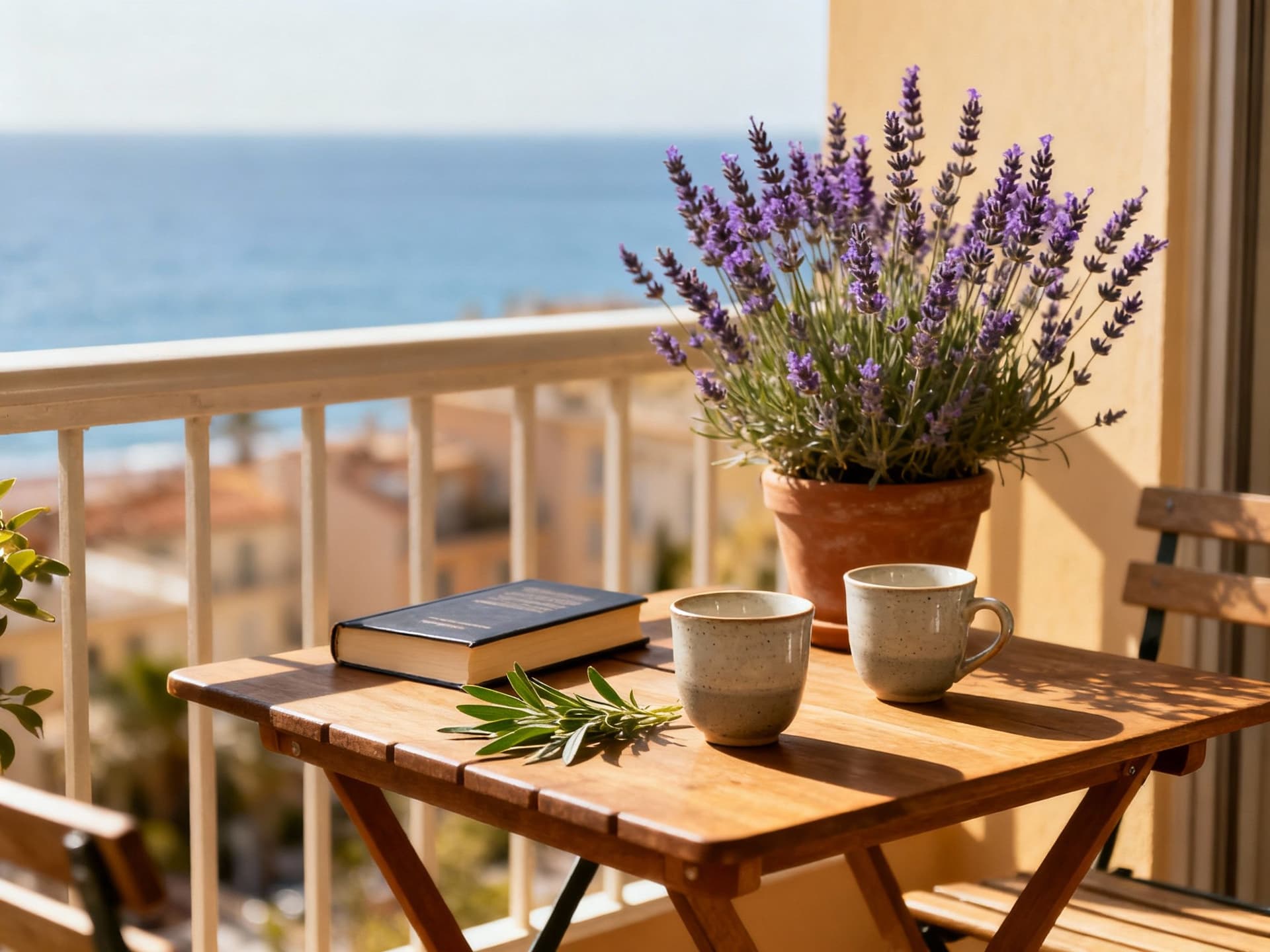France: Match the Lifestyle to Where Returns Live
France offers irresistible lifestyle variety — from Parisian cafés to Provençal markets — but INSEE’s recent stability means buyers must match ambience to yield using local data and realistic comps.
Imagine a Saturday morning in Aix‑en‑Provence: market stalls spilling figs and lavender onto sun-warmed flagstones, a barista pulling espressos on Cours Mirabeau, and a boulanger who knows your order. That sensory clarity is what draws buyers to France — the food, the light, the slow choreography of local life. But beneath that romance sit measurable market dynamics that change where good value and stable returns live. According to recent INSEE data, national prices have stabilised after a correction, making now a moment for disciplined buyers to be selective rather than sentimental.
Living the France Life — sensory clarity, region by region

France is many countries in one. Paris is a compact, vertical life of museums, cafés on narrow streets and a high-end rental market where demand outstrips supply. The Riviera is sun‑first living with a summer tourist spike; its hill towns offer quieter, year‑round communities. The Loire and Dordogne promise pastoral calm and larger square‑metre value, while Lyon and Nantes combine strong local economies with better net yields than Paris. Know the ambience you want — daily markets, sea access, alpine weekends — and you’ll immediately narrow the investment set.
Paris: dense, expensive, resilient
Picture strolling from Canal Saint‑Martin to the Marais: historic streets, compact apartments and a tenant pool made up of professionals and international students. Prices per square metre in Paris remain the national outlier; this delivers capital preservation rather than market‑leading gross yields. Expect low vacancy but tight entry multiples and higher transaction friction compared with provincial cities.
Provinces & small cities: space that rents for less cost
Walk a street in Lyon’s Croix‑Rousse or Bordeaux’s Chartrons and you’ll find bigger floorplates and professional rental demand that often translates into higher gross yields than Paris. INSEE’s recent reports show metropolitan France experienced near‑stability after prior declines — a signal that the market is selective rather than broadly overheated. For yield‑oriented buyers, mid‑sized regional cities often balance purchase price and steady rental markets.
Lifestyle highlights — places to live and love
- Cours Mirabeau, Aix‑en‑Provence — morning markets and Provençal cafés
- Vieux Nice — seaside promenades and daily fruit markets
- Croix‑Rousse, Lyon — working‑class charm, strong local employment
- Saint‑Paul‑de‑Vence (Côte d’Azur hills) — quieter alternatives to coastal hotspots.
Making the move: practical considerations that match lifestyle to returns

Lifestyle is the hook; due diligence is the commitment. Begin with regional price maps and transaction data: French notaries and INSEE publish quarterly indices that tell you where prices peaked, corrected, or stabilised. Pair those with local rental listings to estimate achievable rents — gross yield is simply annual rent divided by purchase price. In many provincial towns that calculation outperforms central Paris by several percentage points.
Property types and how they shape living (and returns)
A Haussmannian one‑bed in Paris sells as a compact, high‑value asset with low turnover; it suits capital appreciation and textbook urban rentals. A stone farmhouse in Dordogne offers land, scale and renovation upside but brings higher carrying costs and rural tenant risk. New build in Nantes or Lyon appeals to international professionals and offers lower maintenance short‑term. Match type to tenant profile: families want space and schools; remote workers want reliable broadband and quiet; holiday lets need access and parking.
Working with local experts who translate lifestyle into metrics
Local notaires, chartered surveyors (géomètres‑experts), and agencies with investor desks are essential. They provide exact price per m² comps, rental permit rules for short lets, and realistic refurb budgets. Use their reports to stress‑test yields and cash flows rather than relying on agent photos. A robust agent will show you comparable lettings, vacancy rates, and recent sales with dates — data you can plug into an acquisition model.
- Estimate yield: 1) Gather comparable monthly rents; 2) annualise rent and subtract estimated costs (20–35% for management, tax, maintenance); 3) divide net annual income by purchase price; 4) run sensitivity for vacancy and repairs.
Insider knowledge — what expats and buyers usually learn too late
You’ll hear myths: "France is too high‑tax to invest," or "the Riviera always outperforms." The truth is granular: tax regimes vary with residency, and local market performance diverges sharply. Recent market reporting shows foreign buyer activity rising in southern departments like Alpes‑Maritimes and Haute‑Savoie, but their share of total transactions remains modest. That means pockets of international demand coexist with broad domestic-driven markets — useful if you want stable occupancy rather than season‑only cash flows.
Cultural and daily‑life realities that affect ownership
French tenancy norms, bilingual bureaucracy and a preference for long‑term leases in many cities change how you operate a lettable asset. Neighbourhood rules — syndics for apartment blocks, village association constraints in rural areas — affect renovation choices and ongoing costs. Language matters for municipal permits and notaire communications; budget for professional translation or bilingual advisors during purchase.
Seasonality and a contrarian timing tip
Contrary to the summer‑holiday impulse, house‑hunting on the Riviera in late autumn or winter often reveals better negotiating leverage. Tourist-driven markets show their true year‑round demand only outside July–August; sellers who list in low season are frequently motivated. INSEE data shows recent quarters of pricing stability and even modest recovery, so off‑season viewings let buyers compare full annual rental potential rather than peak‑month illusions.
- Red flags to spot before you bid:
- Unusually high advertised yields with no comparable rents — likely optimistic pricing.
- Short‑let demand concentrated in two months of the year — plan for winter vacancy.
- Opaque building charges or no syndic minutes for apartments — hidden liabilities.
How life changes after the purchase — small routines that matter
Owning in France alters your weekly map: local marché days dictate shopping, mairie notices set renovation timelines, and the neighbourhood café becomes your informal property monitor. For landlords, a trusted local manager and a notaire who keeps records of any servitudes are the practical counterparts to that lifestyle. These relationships preserve both your peace of mind and the asset’s long‑term value.
Steps to move from dreaming to an evidence‑based purchase
- 1) Define the lifestyle (city, coast, country) and acceptable gross yield band; 2) Pull recent sold comps and local rent listings; 3) Instruct a notaire to review title and servitudes; 4) Budget for 10–15% transaction costs plus 5–10% immediate refurbishment; 5) Engage a local property manager before completion.
Conclusion: France sells a life — markets sell returns. If the Provencal market sells you lavender and slow lunches, make sure the numbers buy you stability and income. Use national indices and local comps to ground romance in returns; prioritise regions where lifestyle and yield align. When in doubt, test a short‑term rental window in the first year to validate demand and refine pricing. A well‑selected French property can deliver both a lived experience and a disciplined financial holding.
Swedish financier who guided 150+ families to Spanish title deeds since relocating from Stockholm in 2012, focusing on legal and tax implications.


